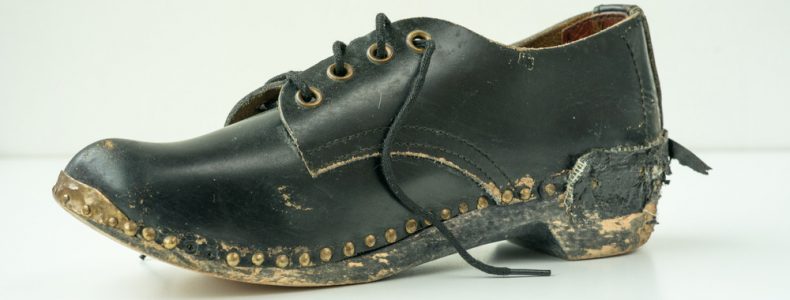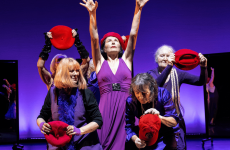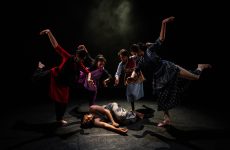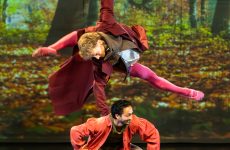Exploring the tradition of Clog Dancing – North East Dance Heritage Project
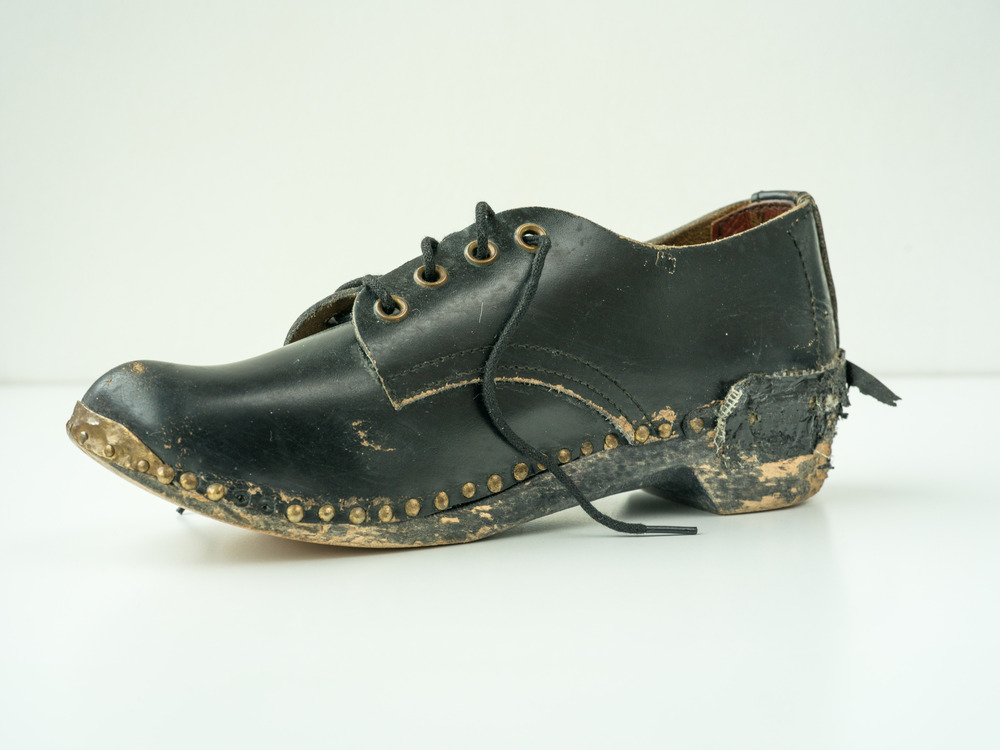
Photograph of North East-based clog dancer Laura Connolly’s first pair of Turton’s clogs. Photo by Michael Sreenan.
© Michael Sreenan. Image provided by Laura Connolly and Michael Sreenan. Published with permission by Dance City. All rights reserved.
Throughout the Dance Heritage project, we have been researching dance genres that are as varied as ballet, break dancing and Northumbrian folk dance – all of which have strong traditions in the North East but whose roots reveal connections with dance forms from all over the world.
Rooted in the heart of folk traditions lies a dance style that trades delicate steps for rhythm and expressive footwork: clog dancing. With its beginnings in working-class communities, its echoes can still be heard in contemporary dance. Clog dancing is both a cultural treasure as well as a living tradition, both in the North East and the rest of the world.
In this blog post we shall be looking at the tradition of clog dancing and the history of its northern roots.
What Is Clog Dancing?
Clog dancing is a percussive dance style where the dancer wears wooden-soled or hard-soled shoes known as clogs. The dancer creates rhythm by striking the floor with their feet, effectively turning each step into a beat of music.
It can be performed solo or in groups and is often accompanied by traditional music, particularly fiddle and accordion tunes.
Clog dancing is sometimes confused, by those outside of the profession, with tap dancing, although they are related. Tap dancing evolved in part from clog dancing, and while both emphasise rhythmic footwork, clog dancing is often more grounded and linked with folk traditions.
Clog dancing in the North East
“Clog dancing originated in the industrial areas in the North East during the 18th and 19th centuries. Workers in the mines would use their clogs to create rhythmic patterns, often competing. You could actually earn a year’s salary if you won the championships!”
Laura Connolly, Professional Clog Dancer
Clogs are a cheap sustainable form of footwear and often passed down from father to son in the mining families. These performances down the mines, laid the foundation for clog dancing as a popular working-class pastime.
The dance soon found its way into music halls, where it was stylised and performed on stage. This theatrical version spread and grew over time, influencing American dance styles such as buck dancing, flatfooting, and eventually tap.
“You may have come across Charlie Chaplain. Did you know that Charlie Chaplan started his life on stage as a clog dancer? He danced with four other boys in a troop called the Lancaster Lads.
You often found clog dancing taking place in the music halls, and the champion clog dancers would perform there. Clog dancing even became part of comedy acts.
There was a very famous clog dancer called Dan Lingo who was the first person to dress as a pantomime dame and he would clog dance, sing, and tell stories and jokes as part of his act.”
Laura Connolly, Professional Clog Dancer
The history of North East clog dancing reflects the practicalities of working-class footwear alongside traditions of communal music and dance. This historical foundation continues to define its unique rhythmic identity compared to other regional styles.
Clog Dancing Variations
Over the years, there have been many different styles of clog dancing introduced around the world.
There’s English Clog Dancing: known for its upright posture and precision. It often features dances passed down through generations, with variations like the Northumberland styles.
Then, we have Welsh Clog Dancing and American Clogging.
Clog dancing is a celebration of resilience, creativity, and community. Something we are proud and passionate about here in the North East.
Born from the lives of workers and passed down through generations, it tells a story of people who made joy out of labour and turned wooden shoes into musical instruments.
Whether you’re watching a skilled performer on stage or trying a few steps yourself at a local festival, clog dancing offers a unique way for us here in the North East, to connect with our past, whilst feeling pride in our heritage.
About Laura Connolly
Laura Connolly is a professional clog dancer with 30 years of competing, training, performing and teaching under her belt. Her passion for clog dance lead her to the BMUS Folk and Traditional Music degree course at Newcastle University. Here she pioneered the inclusion of “Foot Percussion” as a valid instrument with UCAS, paving the way for upcoming percussive folk dancers.
Laura has been a member of The Demon Barbers (Breaking Tradition) for 20 years, performing at prestigious venues and festivals such as Glastonbury Festival, Cambridge Folk Festival and the Wuhan Festival of Dance in China! She also really enjoys performing and teaching locally in schools and at community events.
In 2011, the BBC selected Laura to work alongside Charles Hazelwood to create a flash mob clog dance in Newcastle for the fabulous BBC4 documentary “Come Clog Dancing”. Laura taught 200 beginners to clog dance in ten days!
About the North East Dance Heritage Project
Dance City was thrilled to deliver a dance heritage project that brought together volunteers, dance enthusiasts, and artists based in the North East to explore and map the region’s expansive and unique dance heritage.
Dance City is the North East’s leading dance charity. Our mission has been to support the artistic life, education, and health of people of all ages in the North East by making great dance experiences possible for everyone.
The project was made possible with funding from The National Lottery Heritage Fund, thanks to National Lottery players.

Artefacts provided by Laura Connolly
Photography by Michael Sreenan (23 February 2025)


